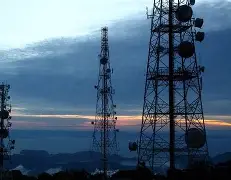ENVIRONMENTAL SUSTAINABILITY
Environmental sustainability plays a huge role and purpose with solar powered cell phone towers. Traditional cell phone towers rely on electricity from fossil fuels which contribute to greenhouse gas emissions and climate change. Solar powered towers on the other hand harness clean and renewable energy from the sun significantly reducing cardon emissions and environmental impact. By operating off-grid these towers minimize reliance on non-renewable energy sources and help conserve natural resources.
LOW OPERATING & MAINTENANCE COST
Low operating and maintenance costs are a major advantage when it comes to solar powered cell phone towers. Traditional towers rely on diesel generators and/or grid electricity. Which comes from recurring fuel costs. Solar towers on the other hand harness free energy from the sun, Once the initial investment in solar panels and batteries is made the system can run with, minimal intervention for years. This makes it especially cost-effective in remote or rural areas where fuel delivery and technician access can be expensive and unreliable.
INDEPENDENT POWER SOURCE
The cost of an independent power source is a major factor when it comes to the solar powered cell phone tower because it directly affects both the upfront investment and long-term operational savings. Traditional cell phone towers often rely on diesel generators to connect to the electrical grid. Which could be very expensive to install in a remote location. In contrast, solar cell phones tower uses the sun an use of an free energy source, paired with battery storage allowing them to operate off the grid. While the initial installation of solar panels, batteries, and control systems may be very expensive up front this independent power source eliminates fuel costs and reduce maintenance leading to significant savings overtime.
QUIET & NON-POLLUTING
Solar cell phone towers ditch the noise, pollute diesel engines for clean, Silent solar power, they’re almost inaudible in operation and produce no direct emissions, making them ideal for power- sensitive environments and helping telecom providers shrink their environmental footprint. In short, solar-powered cell towers are pushing telecom into an era of cleaner, quieter, more autonomous infrastructure-benefiting both operators and communities while advancing broader climate and energy goals. When supported by smart regulation and advanced monitoring systems, solar towers transform connectivity into silent, clean, and community-empowering infrastructure.
HIGHLY SCALABLE
When discussing solar power towers, the terms highly scalable refer to the system’s ability to be expanded or adapted efficiently as energy demands grow. Solar power towers use a field of mirrors to focus sunlight onto a central receiver to atop a tower, where the concentrated energy is used to produce steam and generate electricity. This centralized design allows for relatively easy scaling: more heliostats can be added to increase the amount of concentrated within a solar field. Because the modular components like heliostats and receivers can be duplicated or upgraded, the entire system can grow in capacity without requiring complete redesign.
IDEAL FOR REMOTE LOCATIONS
Solar cell power towers are particularly well- suited for remote locations because they offer a decentralized and sustainable energy solution that doesn’t ‘rely on extensive infrastructure. In many remote areas, access to the traditional power lines over is limited or non-existent and extending power lines over long distances can be prohibitively expensive and environmentally disruptive. Solar power towers, which concentrate sunlight using mirrors to generate electricity, can operate independently and provide a consistent source of power where it’s most needed. This makes them an idea; choice for isolated communities, research stations, or off-grid industrial operations.

No comments:
Post a Comment